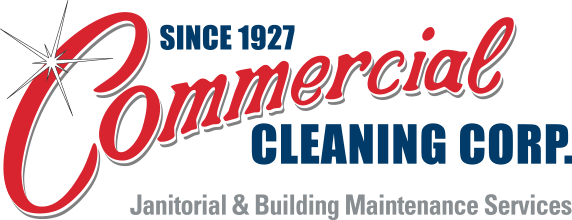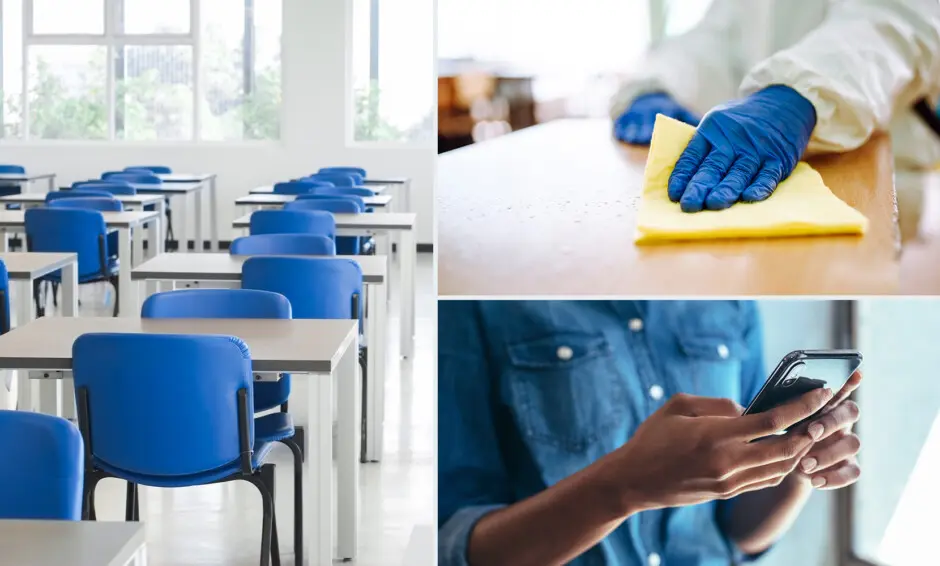Maintaining a clean environment in K-12 schools goes beyond hygiene—it’s about creating a safe and healthy space where children of all ages can learn and thrive. But even the most rigorous cleaning practices lose impact if they aren’t communicated effectively. Faculty, parents, and staff need to feel confident that your school is prioritizing cleanliness and health for everyone who steps foot on the premises.
Transparency in school cleaning services also builds trust with parents of young children, who are especially concerned about germs, and with faculty, who navigate classrooms filled with high-energy students daily.
By clearly communicating cleaning schedules and standards, your school can highlight its commitment to the well-being of everyone in the community.
Why Communicating Cleaning Standards Matters
For K-12 schools, campus cleaning is about appearances but more so about protecting the health of children and staff across a wide range of ages, from kindergarteners who are still learning basic hygiene to high schoolers navigating crowded hallways and extracurricular activities. Parents of younger children in particular worry about their kids touching shared surfaces like desks, playground equipment, or cafeteria tables and contracting illnesses or bringing things back home. Faculty and staff often share these concerns, as they work in environments with high traffic and diverse health needs.
Clear communication of cleaning standards and schedules reassures all stakeholders that your school is actively addressing these challenges. Parents want to know that classrooms, restrooms, and other shared spaces are being cleaned frequently enough to combat the spread of germs. Teachers and staff appreciate knowing that their workspaces are being sanitized to support their continued health and productivity, no matter the season.
Transparent communication also reflects positively on your school’s values. When parents see that cleaning schedules prioritize high-traffic areas like hallways, gymnasiums, and cafeterias, they are reminded of the school’s dedication to providing a safe learning environment for their children. This is even more important during cold and flu season or when dealing with allergens that may affect certain students more than adults.
Best Practices for Communicating Cleaning Schedules & Standards
Developing a strong communication strategy is essential for building that delicate trust with parents, faculty, and staff in K-12 schools. Here are a few best practices tailored to this environment:
- Develop a Detailed Plan: Cleaning schedules should outline exactly which areas are cleaned and how often. For example, restrooms used by younger children may need more frequent cleaning, as these students are still mastering handwashing techniques. High-traffic areas like cafeterias and hallways should also be addressed multiple times per day. Consider sharing cleaning plans for specific spaces, like art classrooms, where paint and craft materials can create extra messes, or science labs, where cleanliness is critical for safety.
- Use Multiple Communication Channels: Parents of K-12 students are often balancing busy schedules, so it’s critical that you communicate cleaning information in ways they’ll actually see. Include updates in weekly newsletters, on your school website, and during parent-teacher meetings. Faculty and staff may benefit from receiving updates via email or during staff meetings.
- Highlight Compliance with Guidelines: Reference adherence to CDC recommendations, such as the CDC’s guidelines for school cleaning.1 Sharing this information shows parents and staff that cleaning practices are rooted in trusted, expert advice.
- Collaborate with Professional Cleaners: Working with a professional cleaning company for schools provides access to specialized expertise and tools. Companies like Commercial Cleaning Corporation help maintain consistent cleaning practices, so parents and faculty feel confident in the school’s standards.
By following these best practices, your school can effectively communicate its cleaning strategy while addressing the unique concerns of a K-12 environment.
Tips for Streamlining the Communication Process
When communicating cleaning schedules and standards, simplicity and clarity are key. Here are some specific tips for K-12 schools:
- Create Visual Aids: Design easy-to-understand cleaning schedules or checklists that can be displayed in classrooms, hallways, and cafeterias. For younger students, consider including colorful graphics or icons to make the information more engaging. A simple chart showing which areas are cleaned and how often can also be shared digitally with parents.
- Encourage Feedback: Provide opportunities for parents and staff to share their concerns or suggestions. Try creating a short online form where they can comment on specific areas they believe need more attention. Faculty might also provide valuable insights into high-traffic areas or times of day when additional cleaning is needed.
- Leverage Partnerships: Partnering with professional school cleaning companies like Commercial Cleaning Corporation allows your school to meet rigorous cleaning standards while streamlining communication efforts. Professional cleaners not only help with maintaining cleanliness but also add credibility to the cleaning schedules you share with parents and faculty.
Streamlined communication helps everyone feel involved and confident in the school’s commitment to health and safety.
How Cleaning Standards Vary Across K-12 Schools
K-12 schools encompass a wide age range, and cleaning needs can vary significantly from elementary to high school settings. For example:
- Elementary Schools: Younger children often touch shared surfaces, making regular cleaning of desks, door handles, and playground equipment critical. Restrooms and handwashing stations should be prioritized due to younger students’ developing hygiene habits.
- Middle Schools: These spaces may require a focus on high-traffic areas like cafeterias and gymnasiums, as older students often gather in groups. Sanitizing high-touch surfaces and locker areas is also key.
- High Schools: With larger student populations and more extracurricular activities, cleaning schedules must account for diverse areas like music rooms, science labs, and athletic facilities. Regular sanitization of classrooms and shared equipment ensures a safe environment for all.
Addressing these unique needs demonstrates that the school understands the specific requirements of its community.
Conclusion: Work with Commercial Cleaning Corporation
Communicating cleaning schedules and standards is essential in K-12 schools to foster trust among parents, faculty, and staff. By clearly outlining your cleaning strategy, addressing unique concerns for different age groups, and partnering with professional cleaners, you create a transparent and effective approach to campus hygiene.
Commercial Cleaning Corporation specializes in K-12 school cleaning services, offering tailored solutions to maintain campus cleanliness and support your communication efforts. From classrooms to cafeterias, we bring the expertise needed to keep your school safe, clean, and welcoming for students of all ages.
Ready to enhance your school’s cleaning efforts? Schedule a consultation today.
For additional tools and resources, explore our Ultimate Guide to School Cleaning and our cleaning checklists and resources. Let us help you create a healthier, safer environment for your school community.
Sources:
1. How To Clean and Disinfect Schools To Help Slow the Spread of Flu, CDC


One thought on “How to Communicate Cleaning Schedules & Standards to Faculty & Parents in K-12 Schools”
Comments are closed.